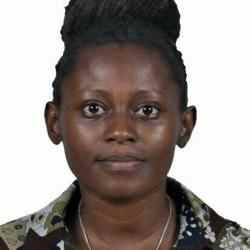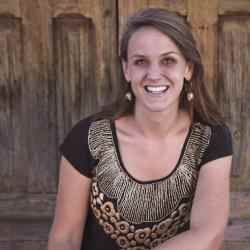Introduzione
Anusha Bhardwaj is empowering high-risk, rural, and tribal adolescent girls to become first-generation leaders, peer mentors, advocates, and powerful eco-system builders of their own field. As she sets up an India-wide movement of adolescent girls, she is partnering them with young women college students who serve as trainers, role models and allies. By setting up self-perpetuating networks of adolescent girls and college women leaders, Anusha is demonstrating that girls can design and scale their own solutions, break barriers to access higher education and experience economic freedom. This ‘girls-for-girls’ model is now being integrated into the government school systems and is being powered by a field force of teacher allies.
La nuova idea
India’s female workforce participation is among the lowest in the world (less than 16.1% ). Behind this enormous gap are deep-rooted social and cultural practices that prevent women from staying in the safety net of education, building 21st-century skills, and navigating the future of work. The problem starts upstream when high-risk adolescent girls from rural and tribal marginalized communities start to drop out of school as soon they hit puberty. They are either trafficked or pushed into teenage parenting before the legal age of 18 years.
Anusha is reversing this trend. She recognizes that adolescent girls and young women from remote villages and small towns can bring fresh solutions and build dynamic local eco-systems for India’s girls and women to sustain and thrive in the education system and workforce. Focusing on rural and tribal government residential schools, Anusha and her team have innovated a leadership camp and peer mentoring model that is led by tribal adolescent girls themselves. In these camps, the girl participants are trained as leaders; they strengthen purpose, autonomy, and social capital for their own selves; they learn to negotiate with rigid families and navigate through the school-to-work continuum. More critically, they learn to build enabling eco-systems by converting families and teachers into allies.
At the end of the three-leadership camp model, the girls graduate as Sakhis. Sakhis are champion-friends or peer mentors who go on to replicate the leadership camp model in their schools with the support of teacher allies. The Sakhis train, coach and equip other at-risk girls to change the script of their own lives and join in the ever-widening ‘girl-for-girl’ movement. Over 12 years, Anusha’s organization, Voice4Girls (V4G) has launched 106,505 adolescent girl peer mentors across 695 schools. The peer mentors have independently catalyzed an additional 122,500 girls in a cascading model of change.
To add more youth power to the model, Anusha connects adolescent girls with unusual and exceptional partners – i.e., young women students from local city colleges. These young women interns are rigorously trained as leader-trainers, mentors, and role models who take charge of the camps and deliver the transformative leadership curriculum of V4G inside government schools, at scale. In the process, this talent pool of young women trainers experiences leadership and personhood in their own lives, even as they integrate the V4G pedagogy inside the government school systems. Pairing rural, tribal adolescent girls with a field force of 5,000 urban college women leaders has been an impact-multiplying strategy for Anusha. It has enabled her to scale her model widely across seven states while deepening local ecosystems of girl solidarity.
Anusha has leveraged the massive outreach of KGBV , a countrywide network of government residential schools as well as the government’s network of tribal and social welfare schools to transform the most hard-to-reach communities. The V4G curriculum has been integrated into the state-wide social welfare and tribal welfare schools as well as in the adolescent girl programs of the Telangana state. Impressed by the visible behavior change in the girls at the end of the camps, several government officials have invited Anusha to launch her module in new districts across the country. Across 695 government schools, Anusha and her team have cumulatively impacted 244,500 adolescent girls. Ninety-eight percent of the girls have pursued their higher education, got recruited into jobs or become self-employed. It is this momentum that Anusha seeks to build with more state and civil society partnerships across India.
Il problema
Nearly 40 percent of adolescent girls in India, aged 15-18 years, do not attend any educational institutions (NCPCR). In the age group of 11-13 years, more girls drop out of school (10.03%) than boys (6.46%). As one moves up to high school, the drop-out rate of girls increases to 57%. This steady outflow of adolescent girls from the formal schooling systems is a critical trigger for the big gender gap in India’s workforce participation rates.
India’s low female labor force participation rate can be attributed to deeply-held social and cultural norms with highly gendered expectations and trajectories. Statistics reveal that of the 113 million adolescent girls, 48% get married before the age of 18 in rural areas, compared with 29% in urban areas . Emaciated, uneducated, and unskilled, these girls go uncounted in the country’s productive workforce.
For all practical purposes, the life of an adolescent girl ends the moment she achieves puberty. At this stage, girl labor is considered to be at a premium. She is trafficked, married off early, or plowed into the low-end migrant labor markets. UNICEF reports that every year, 1.5 million girls in India under 18 years of age drop out of school to get married. About 9 percent of them in rural areas get pregnant between 15-19 years and are at a higher risk of maternal and newborn ailments and deaths .
Government programs for adolescent girls work in silos. They focus on distributing sanitary napkins, without the infrastructure, awareness of sexual and menstrual health, or the know-how of transitioning to empowered adulthood. To add to the burden, discussions on bodily changes, menstruation, and sexual health are hushed by school teachers who reproduce the same patriarchal values of silence and stigma around these topics. Moreover, civil society initiatives for adolescent girls are mostly designed through the adult gaze and are rendered by cadres of government teachers and adult facilitators.
Adolescent girls, especially in tribal belts, do not have access to programs or counseling where they can make meaning of the drastic physical and emotional changes that they experience at the onset of puberty; where they can build strategies to navigate family and societal expectations, while nurturing their inner autonomy and aspirations for themselves. For these reasons, many schools in Telangana, the state where Anusha works, have reported an increased occurrence of adolescent girl suicides.
La strategia
Anusha places the adolescent girls at the forefront of her response. Working on the paradigm that girls are the best problem-solvers and shapers of their contexts, she equips them to drive change, and to build adult allies for their movement. Anusha targets government residential schools that serve girls from the poorest of the poor families. These girls are either abandoned or raised by single mothers or belong to nomadic and migrant households with little means to provide for their young girls. Focusing on their most vulnerable lifecycle stage, Anusha and her team work with girls when they are transitioning from the 7th to the 8th standard. This is the point when they are most likely to disappear from the education net.
Over a one-year period, the participants are introduced to a set of three leadership camps of 10 days each. Every camp is designed as a crucible of real-life scenarios and carries a distinct purpose. The camps are large, with 500-2000 students experiencing change in one location, with a ratio of one camp counsellor (the female college intern) to 30 adolescent girls. At the camps, the girls master 21st century skills from a gender lens. They hone the competencies of goal setting, problem-solving, communication, relationship-building and self-advocacy from a gender lens. Through the entire three-camp experience, the adolescent participants learn how to identify, prevent, and report abuse and violence. They stay in healthy relationships, understand the power of consent, and start to believe that decision-making for their lives lie in their own hands. Parichay or ‘Introduction’, the first camp is an introduction to self, one’s body, rights, and safety. Disha or ‘Direction’ is the second camp, where girls plan their education, become career-ready and understand the importance of economic independence. And finally in the third camp, Sakhi or ‘Friend,’ the girls realize their leadership potential as peer mentors.
The backbone of the leadership camps is a rigorous, interactive, and well-codified 250 hour leadership and peer-mentorship curriculum. The curriculum opens up safe and de-stigmatized spaces for girls to understand sexual, menstrual, and reproductive health rights. Through14 core modules, the girls traverse the domains of self, education, employability, leadership and rights and agency. The pedagogy builds the skills of gender analysis for girls as they unravel the systemic barriers that stop them from pursuing a confident, aspirational, and meaningful life.
All modules are delivered through a “discovery method” of learning with games and popular local references. Anusha has also integrated stories of local girl and women leaders to provide an alternate imagination – that girls can be leaders too and bring lasting change in their communities.
What drives the success of the camps are the young college girls who intern to serve as camp counsellors. They are selected after a multi-stage screening process that is led by older girl counsellors with prior experience. A rigorous 5-day training equips the young women counsellors to take charge of the camps, deliver critical content with ease and confidence and manage disclosures from girls facing violence and abuse. Anusha and her team have laboured hard to simplify complex feminist teaching, otherwise dependent on a skilled adult facilitator, into very simple, accessible modules, which can easily transacted by 19-20 year old college girls.
With rigorous attention to detail, planning and attention to safety, the camps thrive on the unique relationship and energy shared by the girls from different age groups and contexts. Inspired by their camp counsellor Akka (big sister), the adolescent girls build a shared bank of solutions, tactics, and ideas for creatively and resolutely walking on the pathway to education and work. The School principals and government officers have acknowledged the effectiveness of the young women camp counsellors over that of the more conservative school teachers. Their leadership has made the program more demand-driven, with 50 % of schools seeking multiple years of intervention.
The three-tiered girl-led program developed by Anusha and her team have been integrated into the government school system as a lifeskills curriculum. The leadership and peer-mentorship camps are designed to equip adolescent girls to return to their schools with the spirit of paying it forward. Back in their stations, the adolescent Sakhis or peer mentors facilitate the camp modules and sessions for their school mates; they conduct peer mentoring sessions with other girls and spearhead community action projects to build parent allies. They are aided by a teacher-mentor in each school who creates space in the school routine for girls-led sessions, group mentorship programs, and other supportive action projects with families and communities. In these ways, the young Sakhis widen the hyper-local girl solidarity network with the support of teachers and others in the school system.
Anusha’s girl-led model has registered clear behaviour-change outcomes. 99% of the girl participants attend all three camps – an indication that they don’t drop out of school when at the critical time when they are most vulnerable. 98% of the girls have pursued higher education after the camps, while successfully negotiating marriage proposals and challenging domestic violence. An equal number of Sakhis have cultivated safe spaces and solidarity circles in their communities, including a solidarity forum of mothers as well against child marriages.
40% of the college camp counsellors re-engage with Anusha and her team to intern across multiple years. Most share testimonies of enhanced personhood and autonomy. 20% among them have chosen sectors of social impact for their future work, taking forward the mandate of a world where girls stand up for each other. To strengthen this resource pool of young women changemakers, Anusha has launched Soch for Social Change Fellowships – a feminist leadership academy for young women from smaller cities.
Partnerships with the government school system has been a propeller for Anusha’s model. In Telengana, where the partnership model has been the most mature, the state government machinery mobilizes girl participants from its network of schools, opens up its infrastructure, co-funds the trainings and also champions the V4G leadership camp model. Leveraging the government eco-system has also enabled Anusha to keep her model extremely cost-effective. As of today, the cost of impact per girl for the entire camp ranges from INR 800 (USD 10) to INR 1200(USD 15 dollars).
Lifted by the response and the demand from the ground, Anusha has launched a model for adolescent boys impacting 15,000 boys through the camp model. Over the next five years, Anusha aims to grow her model by three times, by deepening collaborations and integrating the V4G approach into large-scale existing programs.
La persona
Anusha was the first girl child to be born in her family after generations. Her birth was a massive disappointment for the extended family. Her father did not see her face for days and her mother, who had delivered Anusha in her natal home, feared that she would not be allowed back into her marital family. Though her father fell in love with Anusha at first sight, when he finally visited her after much prompting by his in-laws, the scar of the initial rejection stayed with Anusha. She grew up surrounded by an army of cousin brothers who constantly reminded her of her limits as a girl.
Unsurprisingly, Anusha grew up as a rebel, challenging all definitions and boundaries. As a young woman, she chose to play competitive national cricket a male-dominated sport¾walking shoulder to shoulder with the current Indian team captain Mithali Raj. All her choices were colored by her inner fight to excel in every masculine domain including pursuing engineering, which ended up being ‘an excruciating’ experience for Anusha. She went through the academic grind without ever connecting with the subject. This was when she realized that she had set herself up to a poor benchmark –‘of being like a boy.’ This insight fired her up to be an authentic young girl, with her own voice and dreams.
Anusha changed her trajectory to work in the non-profit sector. Working with young girls came naturally to her, as she engaged with some of the day's largest, game-changing social sector leaders and programs of the day. In 2010, she was appointed by the government of Andhra Pradesh (now Telangana and Andhra Pradesh) to lead and design a comprehensive school health program and policy that spread across 85,000 schools, reaching 10 million students. Anusha single-handedly launched this program, managing massive multi-stakeholder partnerships. This intense engagement with the government system taught Anusha critical lessons on partnering with state government bodies.
It was at a village meeting on nutrition for pregnant women, where Anusha spotted a heavily pregnant girl of 13-14 years of age. The image stirred her deeply. She kept thinking of how this teenage mother would soon become invisible, either trafficked or become low-end migrant labor. This destiny was not acceptable to Anusha. This creative anger led Anusha to give Voice4Girls a whole new direction after its original founders from the US quit in the early years of setting up the organization. Anusha went through the whole drill of rebuilding the organization from scratch, with a fresh vision and mission statement and fighting enormous battles to keep the non-profit afloat in the early years.
In her quest to build a leadership movement for-and-by adolescent girls, Anusha clearly knows that social entrepreneurs like her will always be outsiders. She believes that girls know best and that they need only nurturing adult facilitators who nudge them to find their voice.



